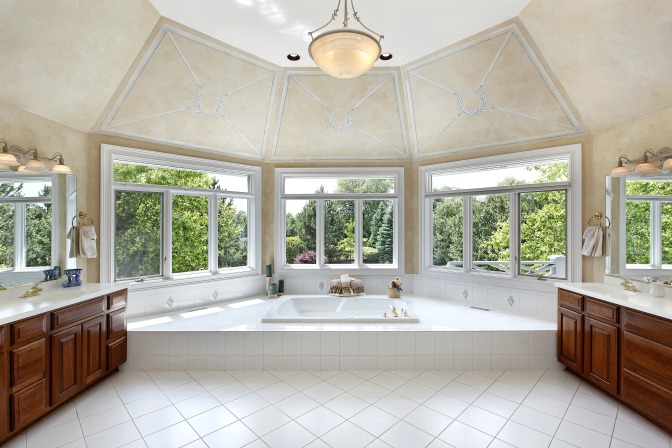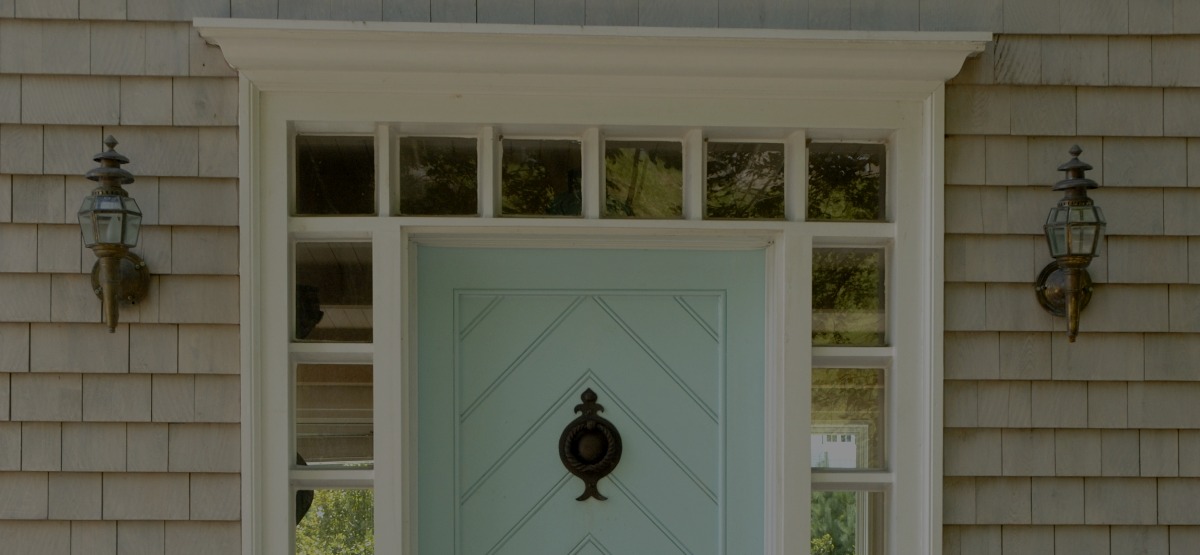As a professional home stager, you have a keen eye for what needs fixing. Ready to tap into that natural flair for design? In this post, we’ll show you how you can use your staging certification to create homes that buyers will fall head over heels for!
After all, you’ve done the training, now it’s time to build your hands-on skills. Gaining experience as a stager will allow you to improve—both professionally and personally. Ask yourself these key questions to prepare for any project…and discover the best ways to use your home staging certification to its fullest potential!
 If a home is overcrowded with furniture or knickknacks, it won’t give off a livable vibe to potential buyers. Clearing a home of any unnecessary objects will instantly make each room more spacious and comfortable. From furniture to wall hangings, a room should never be too busy—it should have just the right amount of furniture to add comfort and still leave a clear walking path.
Rearranging a room or moving furnishings to other areas of the home is a simple way to create space. You don’t have to purge your client’s home of all belongings, just make sure there’s room to move!
A key point: The front entrance is where you’ll want to maximize space. This is the first area of the house that buyers see, and entering into a crowded room does not create the best first impression…
If a home is overcrowded with furniture or knickknacks, it won’t give off a livable vibe to potential buyers. Clearing a home of any unnecessary objects will instantly make each room more spacious and comfortable. From furniture to wall hangings, a room should never be too busy—it should have just the right amount of furniture to add comfort and still leave a clear walking path.
Rearranging a room or moving furnishings to other areas of the home is a simple way to create space. You don’t have to purge your client’s home of all belongings, just make sure there’s room to move!
A key point: The front entrance is where you’ll want to maximize space. This is the first area of the house that buyers see, and entering into a crowded room does not create the best first impression…
 Home stagers, take note: you always need a focal point in the home to draw your buyers’ attention. Your job is to make the house look livable, so attract buyers’ attention to where YOU want it. Create a comfortable, spacious environment that potential buyers can visualize themselves in.
Home stagers, take note: you always need a focal point in the home to draw your buyers’ attention. Your job is to make the house look livable, so attract buyers’ attention to where YOU want it. Create a comfortable, spacious environment that potential buyers can visualize themselves in.
 Coordinating furniture with paint colors and window treatments is an absolute must for home staging. And no, they don’t have to be the same shades! Using complimentary colors and varying shades of the same color family will bring depth to a room. Show potential buyers that there is a scheme to this home—a purpose, if you will. Whether you’re creating a calming ambiance in the bathroom or making healthy living the main focus of the kitchen, plan your color scheme and décor accordingly!
Keep these rules in mind as the foundation of your home staging career. Going back to basics will give you a fresh perspective on every home you work in with your home staging certificate!
Coordinating furniture with paint colors and window treatments is an absolute must for home staging. And no, they don’t have to be the same shades! Using complimentary colors and varying shades of the same color family will bring depth to a room. Show potential buyers that there is a scheme to this home—a purpose, if you will. Whether you’re creating a calming ambiance in the bathroom or making healthy living the main focus of the kitchen, plan your color scheme and décor accordingly!
Keep these rules in mind as the foundation of your home staging career. Going back to basics will give you a fresh perspective on every home you work in with your home staging certificate!
Is it too crowded?
 If a home is overcrowded with furniture or knickknacks, it won’t give off a livable vibe to potential buyers. Clearing a home of any unnecessary objects will instantly make each room more spacious and comfortable. From furniture to wall hangings, a room should never be too busy—it should have just the right amount of furniture to add comfort and still leave a clear walking path.
Rearranging a room or moving furnishings to other areas of the home is a simple way to create space. You don’t have to purge your client’s home of all belongings, just make sure there’s room to move!
A key point: The front entrance is where you’ll want to maximize space. This is the first area of the house that buyers see, and entering into a crowded room does not create the best first impression…
If a home is overcrowded with furniture or knickknacks, it won’t give off a livable vibe to potential buyers. Clearing a home of any unnecessary objects will instantly make each room more spacious and comfortable. From furniture to wall hangings, a room should never be too busy—it should have just the right amount of furniture to add comfort and still leave a clear walking path.
Rearranging a room or moving furnishings to other areas of the home is a simple way to create space. You don’t have to purge your client’s home of all belongings, just make sure there’s room to move!
A key point: The front entrance is where you’ll want to maximize space. This is the first area of the house that buyers see, and entering into a crowded room does not create the best first impression…
Is it cluttered?
Here at QC, we have no desire to spend time in a cluttered space—and neither will your potential buyers! It’s a number one rule in home design: banish clutter once and for all. Simple in theory, but more difficult in practice. Decluttering a client’s home goes right down to the root of the problem—and since you’re (probably) not a professional organizer, you need a quick and easy solution. Preplan a garage sale and help clients decide what can be donated. Throw away items that have outlived their use. Your clients will have a harder time identifying clutter since it is their home. A fresh pair of eyes will help decide which items are necessary and which ones are just taking up space.Is there a focal point?
 Home stagers, take note: you always need a focal point in the home to draw your buyers’ attention. Your job is to make the house look livable, so attract buyers’ attention to where YOU want it. Create a comfortable, spacious environment that potential buyers can visualize themselves in.
Home stagers, take note: you always need a focal point in the home to draw your buyers’ attention. Your job is to make the house look livable, so attract buyers’ attention to where YOU want it. Create a comfortable, spacious environment that potential buyers can visualize themselves in.
- Use accent walls with a trendy color (check out the Pantone color of the year).
- Add a stunning piece of artwork to fill an empty wall.
- Adding mirrors is a simple trick for making a room appear larger.
- Be sure to optimize on natural light! Windows are one of the best features in any room, so decorate them with sheer curtains and advise your clients to keep them clean.
Is it broken?
Imagine walking into a home you’re interested in buying, and the first thing you notice is a railing off its hinges, or a crack in the ceiling. Not very endearing, is it? Potential buyers will be on the prowl for anything and everything that could devalue the house. After all, buying a house is a big investment. Buyers want to view a well-structured and well-cared for building, so make this a priority in your home staging projects! Most home fixes can be done within an hour or two; a bit of patchwork on the walls, fixing up the paint in the kitchen, or even just adding a couple of screws to keep cabinets secure. There are simple fixes to most home problems. And if there are larger concerns to deal with, make sure your clients call in an expert in that area. Trying to rewire the electrical system is NOT something your clients should attempt…Is there a color scheme?
 Coordinating furniture with paint colors and window treatments is an absolute must for home staging. And no, they don’t have to be the same shades! Using complimentary colors and varying shades of the same color family will bring depth to a room. Show potential buyers that there is a scheme to this home—a purpose, if you will. Whether you’re creating a calming ambiance in the bathroom or making healthy living the main focus of the kitchen, plan your color scheme and décor accordingly!
Keep these rules in mind as the foundation of your home staging career. Going back to basics will give you a fresh perspective on every home you work in with your home staging certificate!
Coordinating furniture with paint colors and window treatments is an absolute must for home staging. And no, they don’t have to be the same shades! Using complimentary colors and varying shades of the same color family will bring depth to a room. Show potential buyers that there is a scheme to this home—a purpose, if you will. Whether you’re creating a calming ambiance in the bathroom or making healthy living the main focus of the kitchen, plan your color scheme and décor accordingly!
Keep these rules in mind as the foundation of your home staging career. Going back to basics will give you a fresh perspective on every home you work in with your home staging certificate!
